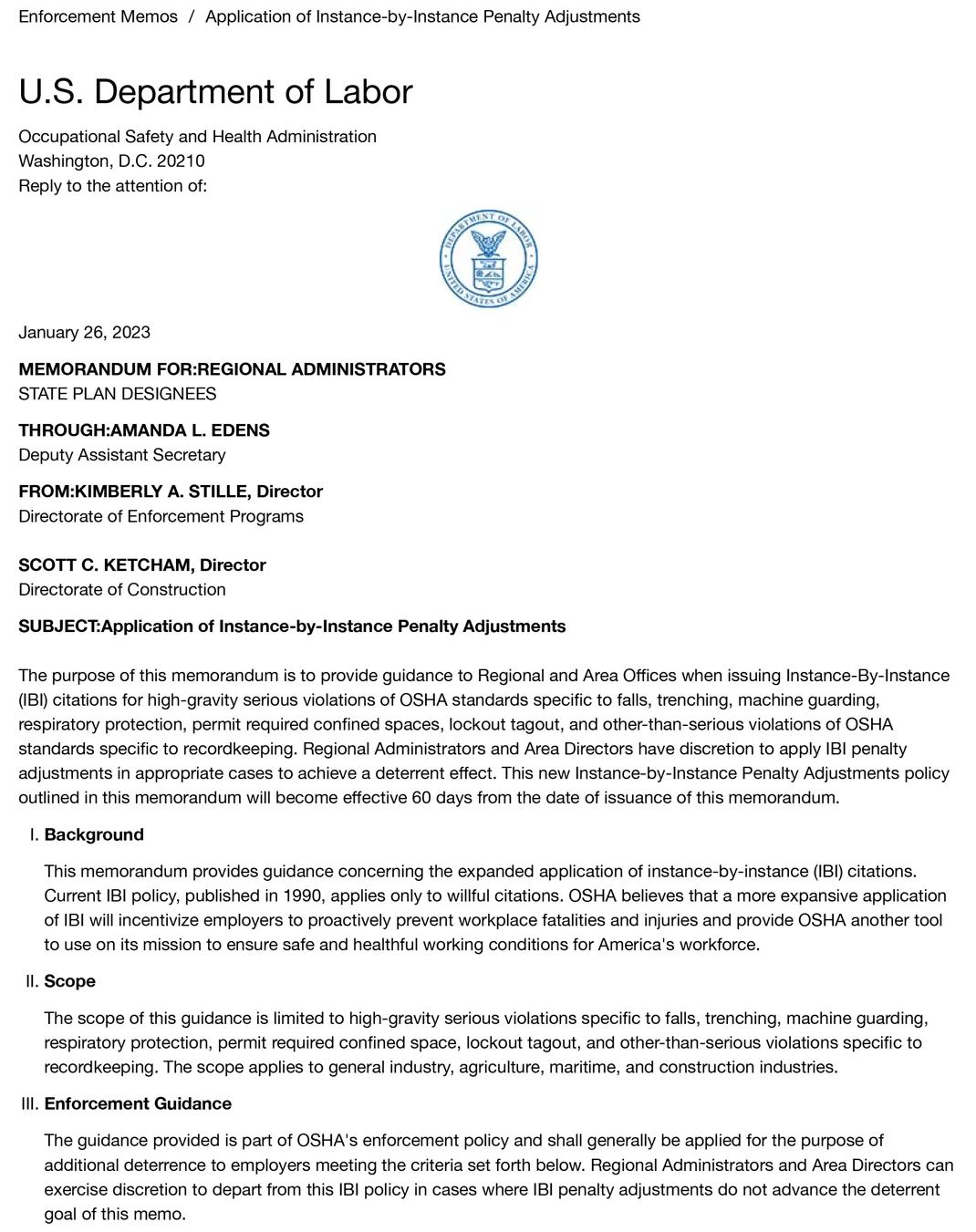

The Occupational Safety and Health Administration (OSHA) has recently issued a new memo that provides guidance on the applicability of penalty adjustments for workplace safety violations. This new guidance aims to ensure that penalties are assessed fairly and consistently, taking into account various factors relevant to the employer and the nature of the violation. Employers should familiarize themselves with this latest guidance in order to prioritize safety initiatives and avoid costly fines and penalties.
Key Factors in Assessing Penalties
When determining penalties for future violations, OSHA will now consider a range of factors to ensure a fair and equitable assessment. These factors include:
Appeals Process for Employers
If an employer believes the initial penalty assessment is too high or unfair, they have the right to appeal the decision. This appeals process allows for a review of the penalty determination and provides an opportunity for the employer to present evidence or arguments in favor of reducing or eliminating the penalty. Employers should be prepared to provide documentation and a detailed explanation of their safety efforts, compliance history, and any mitigating factors that they believe should be taken into consideration during the appeals process.
Importance of Adhering to OSHA's Latest Guidance
It is crucial for employers to pay close attention to OSHA's latest guidance when working on safety initiatives in order to avoid costly fines and penalties. By understanding the factors that OSHA will consider when assessing penalties, employers can prioritize safety measures and investments accordingly. This will not only help protect their workers but also minimize the risk of incurring substantial fines or penalties.
In addition to being aware of the factors influencing penalty adjustments, employers should also ensure that they have a comprehensive safety program in place. This includes conducting regular safety training, hazard assessments, and equipment inspections, as well as maintaining clear communication channels for reporting safety concerns.
OSHA's new memo on penalty adjustments provides important guidance for employers seeking to understand how penalties for safety violations will be assessed in the future. By taking into account factors such as employer size, history of violations, degree of hazard, economic impact, and good faith efforts to comply with safety standards, OSHA aims to create a fair and consistent approach to penalty assessments. Employers should familiarize themselves with this guidance, prioritize safety initiatives, and be prepared to make use of the appeals process if necessary. This will help ensure a safe working environment for employees and minimize the risk of costly penalties for non-compliance.
While these changes have yet to take place, Kee Safety will keep you updated on the latest OSHA standards to keep you in compliance.
Read the entire memo here.
